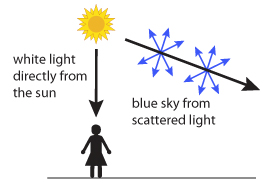

Mountainous terrain along the U.S.-Mexico border is an obstacle to building a wall. More than 90 such lawsuits in southern Texas alone are still open from the 2008 effort to build a fence there. The Trump administration can use eminent domain to acquire the land but will still have to negotiate compensation and often face lawsuits. Then there are the legal fees required to seize land on which to build the wall. But that description doesn’t begin to cover questions about the details of its physical structure. The estimates vary so widely because of the lack of clarity about what the wall will actually consist of beyond the first meager Homeland Security specifications that it be either a solid concrete wall or a see–through structure, “physically imposing in height,” ideally 30 feet high but no less than 18 feet, sunk at least six feet into the ground to prevent tunneling under it that it should not be scalable with even sophisticated climbing aids and that it should withstand prolonged attacks with impact tools, cutting tools, and torches. Although during the election campaign candidate Trump claimed that the wall would cost only $12 billion, a Department of Homeland Security (DHS) internal report in February put the cost at $21.6 billion, but that may be a major underestimate.

The most obvious is the large financial outlay required to build it, in whatever form it eventually takes. The wall comes with many costs, some obvious though hard to estimate, some unforeseen. In multiple and very significant ways that have not been acknowledged or understood it will also affect communities all across the United States as well as Mexico. The border, and more broadly how the United States defines its relations with Mexico, directly affects the 12 million people who live within 100 miles of the border. Nor will the physical wall enhance U.S. security. And such a wall will be irrelevant to those people who become undocumented immigrants by overstaying their visas-who for many years have outnumbered those who become undocumented immigrants by crossing the U.S.–Mexico border. Undocumented workers and drugs will still find their way across any barrier the administration ends up building. But no matter how tall and thick a wall will be, illicit flows will cross. So is to be the wall that President Donald Trump promises to build along the border. Elsewhere, the tall metal barrier is heavily patrolled. With its prison–like ambience and Orwellian name-Friendship Park-this site is one of the very few places where families separated by immigration rules can have even fleeting contact with their loved ones, from 10 a.m. Others never left Mexico, but have made their way to the fence to see relatives in the United States.

Some were deported to Mexico after having lived in the United States for decades without authorization, leaving behind children, spouses, siblings, and parents. Many have been separated from their family members for years. immigration attorney through the border fence. A woman in Tijuana, Mexico speaks with a U.S. and Mexico belie the sadness of the Mexican families who have gathered there to exchange whispers, tears, and jokes with relatives on the San Diego side. The cheerful paintings of flowers on the tall metal posts on the Tijuana side of the border fence between the U.S. Along the U.S. Mexico near Nogales, Arizona Getty Images Vanda Felbab-Brown August 2017


 0 kommentar(er)
0 kommentar(er)
